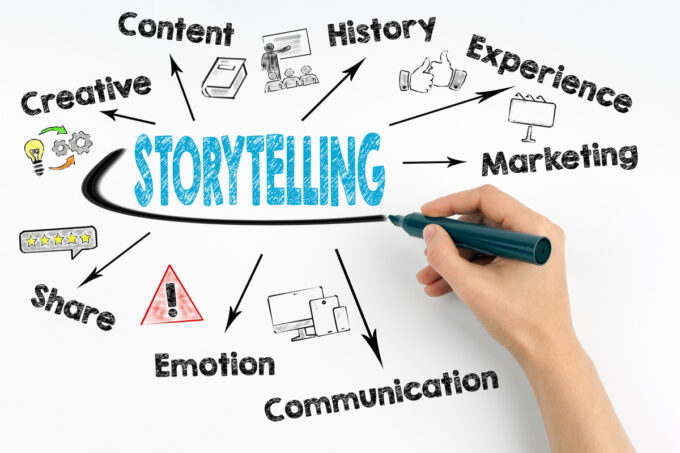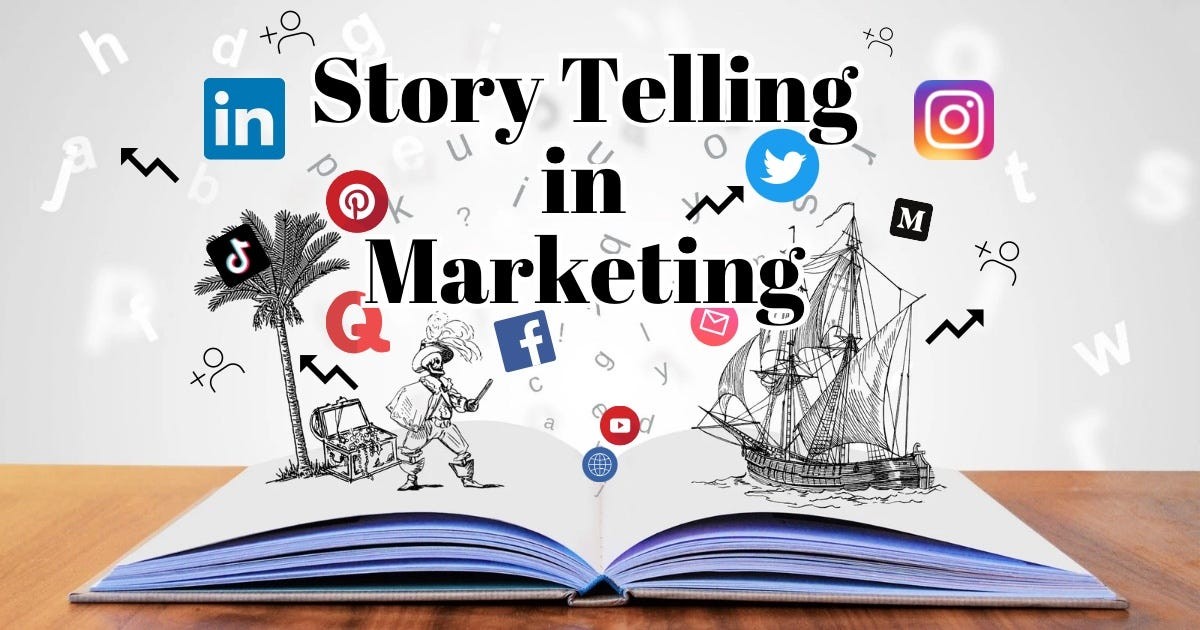In the dynamic and ever-evolving landscape of modern marketing, storytelling has risen to prominence as a key driver of brand-audience engagement. But what makes storytelling such an indispensable tool in this arena?
This article seeks to unravel the intricacies of storytelling’s role, highlighting how it effectively bridges the gap between brands and their audiences.
Crafting Connections: The Heart of Storytelling

At its core, storytelling in marketing is about forging a bond between the brand and its audience. It’s not merely about selling a product or service; it’s about narrating a tale that resonates with the audience’s values, aspirations, and experiences. This narrative approach transforms mundane transactions into meaningful interactions, creating a lasting impression.
One of the key reasons storytelling is indispensable in marketing is its ability to evoke emotions. Stories have the unique capacity to make us feel – joy, sorrow, excitement, or inspiration. This emotional engagement is what sets storytelling apart, making it an invaluable tool in the marketer’s arsenal.
From Audience to Advocates: Building Brand Loyalty
Storytelling does more than just attract customers; it cultivates brand loyalty. When people see their own stories reflected in a brand’s narrative, they feel a sense of belonging. This emotional investment translates into a loyal customer base, turning consumers into brand advocates.
The SEO Advantage: Amplifying Visibility Through Stories Crafting Connections: The Heart of Storytelling

Integrating storytelling into marketing strategies doesn’t just enhance customer engagement; it also boosts SEO. Search engines favor content that is engaging, relevant, and valuable to users. Well-crafted stories tick all these boxes, increasing the chances of your content ranking higher in search results.
Enhancing User Experience: A Story Well Told
SEO isn’t just about keywords; it’s about user experience. Storytelling enriches the user’s journey on your website, making it more enjoyable and memorable. This positive experience not only attracts more visitors but also encourages them to stay longer, reducing bounce rates and improving SEO rankings.
Leveraging Narrative Engagement for Enhanced SEO
The strategic integration of storytelling in marketing content can significantly amplify online visibility. Search engines prioritize content that engages and retains the audience, and stories are a natural fit. By embedding narratives within marketing material, businesses can organically boost their SEO performance. This isn’t just about attracting clicks; it’s about capturing interest and sustaining it, leading to higher rankings on search engine results pages. Additionally, understanding the monetization aspect, such as how YouTube compensates for various view counts, is crucial for content creators.
Creating Compelling Content with SEO in Mind
When crafting stories for SEO, it’s crucial to balance narrative appeal with keyword optimization. This involves meticulously selecting keywords that not only resonate with the audience but also align with the story being told. The goal is to create content that not only ranks well in search engines but also captivates and retains the audience. This dual focus ensures that the storytelling not only serves SEO purposes but also genuinely engages readers. For those utilizing YouTube as a storytelling platform, understanding how to boost the channel’s presence can be crucial, click here to see how!
Building Emotional Connections with Audiences
At the center of effective storytelling in marketing lies the ability to create an emotional connection with the audience. Stories that resonate on a personal level can transform how consumers perceive a brand, elevating it from a mere provider of products or services to a relatable entity with shared values and experiences. This emotional bond is crucial in building brand loyalty and differentiating a brand in a crowded market.
Narratives That Reflect Consumer Aspirations and Values
The stories told should mirror the aspirations, struggles, and values of the target audience. By doing so, brands can create a sense of shared journey and understanding, fostering a community of engaged and loyal customers. This approach moves beyond traditional marketing tactics, positioning the brand as an integral part of the consumer’s own story.
Keywords with a Tale: Optimizing for Search and Humans
When integrating storytelling with SEO, it’s essential to weave keywords seamlessly into the narrative. This approach ensures that while your content is optimized for search engines, it remains engaging and relatable for human readers.
FAQs on Storytelling in Marketing

Q: Can storytelling in marketing work for any type of business?
A: Absolutely! Storytelling is a universal language that resonates across industries. Whether it’s a small startup or a large corporation, every brand has a story to tell that can captivate its audience.
Q: How do I start incorporating storytelling into my marketing strategy?
A: Begin by understanding your audience and what stories they would find compelling. Then, weave these narratives into your content, social media, and advertising campaigns. Remember, authenticity is key.
Q: Are there any risks to using storytelling in marketing?
A: The primary risk is inauthenticity. If a story feels forced or doesn’t align with the brand’s values and audience’s expectations, it can backfire. Always strive for stories that are genuine and true to your brand.
In conclusion, the importance of storytelling in marketing cannot be overstated. It’s a powerful tool that brings humanity and emotion into the world of commerce, forging deeper connections with audiences and turning them into loyal customers. As the digital landscape continues to evolve, storytelling will remain an essential component in crafting compelling marketing strategies.










